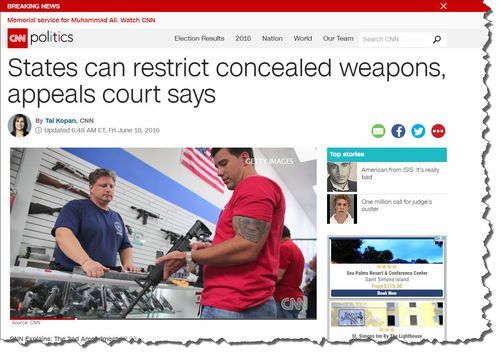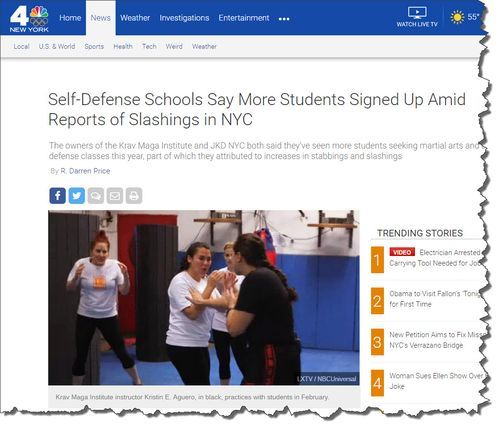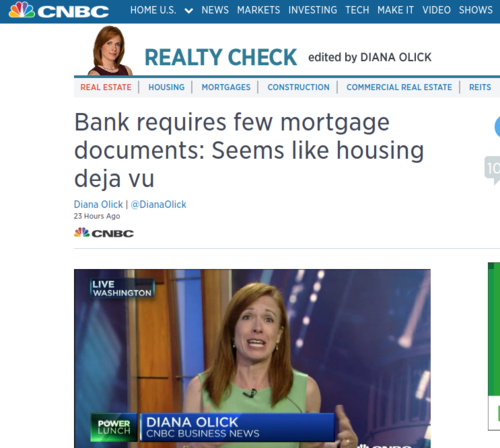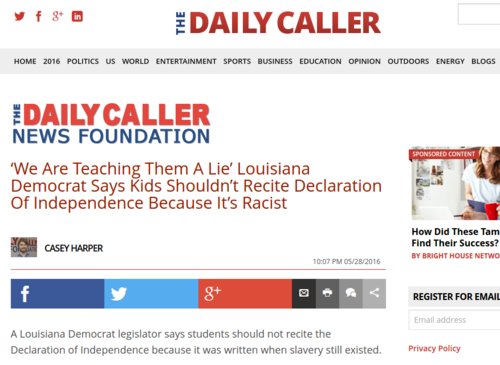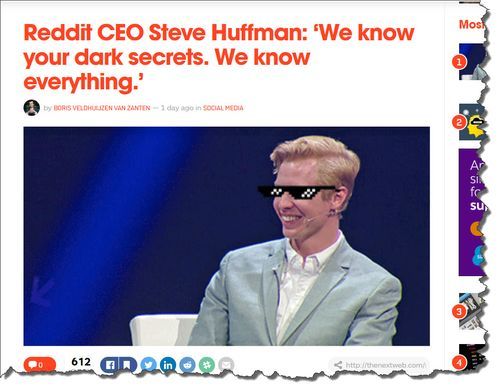James L. Paris's Blog, page 160
June 10, 2016
Wow! Federal Court Says 2nd Amendment Preserves No Right to Actually Bear Arms
A ruling by the Ninth Circuit Court of Appeals out of San Francisco serves as a stark reminder to anyone with an interest in protecting the right to keep and bear, as well as in protecting liberty, more generally, that there will never be a day when the fight to preserve expeditious, useful access to firearms can be seen in the rearview mirror.
In a 7-4 ruling that came down on Thursday, the federal appeals court said flatly that the Second Amendment does not include an inherent right to carry a concealed firearm in public. The Ninth Circuit covers Alaska, Arizona, California, Hawaii, Idaho, Montana, Nevada, Oregon and Washington.
The case at the center of this decision, Peruva V. Cty. of San Diego, had its origins back in 2009, when San Diego County resident Edward Peruta���s application for a concealed carry license was rejected because he failed to show ���good cause��� for needing the permit. ���Good cause��� provisions of local gun laws, used in conjunction with the concealed carry application process, have been subject to greater challenges in recent years as more gun owners see them as an unreasonable impediment to exercising their constitutional right to not merely keep, but bear, firearms.
While the ruling was stunning on its face for what it said, it also came as a shock to many observers because it was a reversal of a previous ruling made by the same court on behalf of the same case back in 2014. At that time, it was a three-judge panel that heard Peruta, and the decision it rendered declared that the Second Amendment ���does require that the states permit some form of carry for self-defense outside the home.��� In the wake of that outcome, however, a dissatisfied Kamala Harris, California Attorney General, requested that the Ninth Circuit look at the case again, and court members voted to rehear it en banc, meaning, with the full roster of judges and not just a panel of them.
The majority opinion of yesterday���s decision was written by Judge William Fletcher, a Bill Clinton appointee, which said, in part (and with frightening succinctness), ���We hold that the Second Amendment does not preserve or protect a right of a member of the general public to carry concealed firearms in public.���
Wow���just wow. Well, you can���t accuse the other side of being coy about pursuing their agenda; there it is, right out in the open: The Second Amendment preserves no right for you to actually bear arms in any useful manner���even though the right to bear is enshrined in the amendment itself.
Remember this come November. Like many of you, I am less than enthused about the Republican option that will be available in this year���s general election���but the choice on the other side is no choice at all. I now see the next president almost exclusively as the source of selections of members to the federal judiciary, including the Supreme Court, for the next four years. Please do not forget, not for a moment, the great���indeed, overriding���importance of this aspect of the 2016 election.
By Robert G. Yetman, Jr. Editor At Large
June 9, 2016
Enrollments in NYC Self-Defense Schools Rise as Area Stabbings & Slashings Increase
With stabbing and slashing attacks on the rise in New York City, area residents are demonstrating an acute interest in learning how to defend themselves.
According to the New York Post, and reported by NBC 4 New York, there were 1,796 stabbing/slashing attacks throughout the five boroughs as of the end of May, an increase of just over 10 percent from the number of attacks recorded by the same time in 2015.
The noticeable rise in the dangerous assaults has prompted locals to flock to schools that teach self-defense. The interest has been so great that one school, the Krav Maga Institute, has been forced to put a lid on enrollments for the year.
Although NYPD Commissioner has previously said that most of the attacks are attributable to either domestic violence or assaults between patrons of ���illegal nightclubs,��� and are, therefore, not random, he has also said that the Department was going to examine the record of attacks more extensively so that they could learn more about what is prompting the increase. Additionally, it should be noted���Commissioner Bratton���s attempts at assuaging public fears notwithstanding���that there were several slashing attacks on city subways earlier this year, and, just this past Sunday, a wheelchair-bound East Harlem woman was slashed in what is being called a random attack.
So, more evidence the world is becoming more violent; what a surprise. Nowadays, you have to take a heightened interest in your physical safety - what choice do you really have?
Given that, you would be well-advised to develop at least some rudimentary skills in unarmed combat, if you do not possess them already. If you would like to do just that, but are not inclined to enroll in an ongoing, formal course of self-defense instruction, one helpful alternative may be to learn (and practice���regularly practice) some relatively simple techniques, like those taught in a fine product called 15 Brutal Fight Enders.
15 Brutal Fight Enders is a solid training video, a two-DVD set, that teaches simple moves designed to quickly and effectively end a street conflict. A wide variety of techniques are demonstrated by a host of quality instructors, including former U.S., Israeli, and Russian military special operators, hall of fame martial artists, even a one-time federal prison inmate (there���s a total of 18 different instructors who teach on behalf of this product). There are so many scenarios and defenses covered that it���s not possible to describe them all in this space, but they include techniques to defend against punches, bear hugs, headlocks���how to respond to an attack using head butts and bites (that���s right, I said bites)���even how to effectively use improvised weapons, including a comb, to defend yourself. The total length of the video trainings is a little over an hour and a half.
Here is a glimpse���just a glimpse���of what is taught in the 15 Brutal Fight Enders package:
Recognize and eliminate a threat before your attacker even lays a hand on you.
Quickly get out of a front or rear bear hug situation.
Cause so much pain you will force an attacker to release a headlock.
Use a head butt (most instructors don���t teach this right) to end a fight.
2 ways to get out of a front and rear chock hold.
3 ways to turn the tables on an attacker who throws: a haymaker, a straight right, or a hook.
Take an attacker down with a simple tweak to a handshake.
Use a simple variation on a push that will drop a larger man.
And more, lots more, including:
How to use a single knuckle-blow (using very little pressure) into an easy-to-hit pressure point to bring a man to his knees in excruciating pain.
A very cool ���upside-down handshake��� trick used by savvy bar bouncers to stop trouble just as it���s about to start.
A simple ���human pliers��� move that will shred through flesh and muscle and send your attacker reeling into shock.
FOUR simple ���improvised��� weapons (I���ll bet you���re carrying at least two of them on you right now) that can be instantly lethal when used properly.
One of the best features of 15 Brutal Fight Enders is the price - $7.95 for shipping (you may also pay tax on the shipping charge, depending on your state); that���s it. The $7.95 gets you not only the 15 trainings, but four more bonus trainings, as well as another bonus item all about the application of non-verbal cues in a threat environment. Additionally, not only do you receive the physical DVDs, but you also gain immediate access to the material through digital downloads. With all of that, the product comes with a money-back guarantee, so if you decide after you purchase that this isn���t for you, no sweat ��� just ask for a refund. Interested? Click Here to learn more.
By Robert G. Yetman, Jr. Editor At Large
June 8, 2016
Obamacare Premiums Poised To Jump 50 Percent
Jim shares the shocking news that insurers in several states are projecting increases of 50% and more in Obamacare premiums for this year. The death of boxing great Muhammad Ali, Swiss citizens vote down a proposed basic income plan that would have given each adult citizen a $2,500 monthly check in place of welfare programs, former Secret Service agent for the Clintons will be releasing a new tell all book in three weeks, why Bitcoin is nearing $600, and fitness guru Richard Simmons is hospitalized for bizarre behavior.
Fitness Entrepreneur Shannon Hudson On Jim Paris Live
Shannon 'The Cannon' Hudson, founder of the worldwide fitness chain 9 Rounds, joins Jim to discuss how he grew his fitness chain to more than 360 locations. Hudson shares his vision of building the largest fitness empire in the world. His concept involves a 27 minute circuit training program that focuses on both cardio and strength building. Hudson's kickboxing circuit training began as a way that he trained his own martial arts students in South Carolina. Hudson is a world champion kickboxer and 5th degree black belt in Karate.
Disingenuous CNBC Article Suggests Return of Low-Doc Mortgages Will Lead to New Housing Crisis
An article over at cnbc.com is sounding the alarm on the return of a type of mortgage loan that many held partly responsible for the crash in the U.S. housing market several years ago that led to the Great Recession.
The article, entitled ���Bank requires few mortgage documents: Seems like housing d��j�� vu,��� details the resurgence of stated income loans that allow borrowers to apply for mortgages with very limited documentation requirements. The loans are known either as ���low-doc��� or ���no-doc��� (although true ���no-doc��� loans have zero documentation requirements), and the bottom line is that they permit borrowers to obtain mortgage financing with really none of the traditional documentation requirements that are an intrinsic part of ���full-doc��� loans. They were originally created to assist applicants who had more complex professional and financial ���infrastructures,��� like the self-employed person with multiple entities ��� low-doc loans provide that person an easier, more manageable path to a mortgage. The trade-off is that borrowers end up with rates that are at least a few points higher than what they would pay they went with full documentation loans.
Stated loans became notorious in the wake of the housing crisis, as it was learned that a portion of those who ended up losing their homes in the wave of defaults had originally purchased them through the use of low-doc/no-doc financing. As a matter of fact, the term ���liar loan��� became a popular way to derisively refer to stated loans, as the specialized financing option became subject to weakened standards during the mania of the sub-prime housing boom, and people for whom the stated option was never originally intended became eligible borrowers.
The most pronounced failures of the stated option in the years leading up to the housing crash, it turns out, was both the ability of those with less-than-excellent credit to obtain a mortgage on a stated basis���and for the financing to be available at 100 percent, with no down payment required.
The problem with the CNBC article is that it hypes the return of stated loans (which, in truth, have been back for many years, as they disappeared only briefly following the crash) in a way that implies that one of the primary reasons for the debacle that began in 2008 has now landed back on our national economic doorstep.
There are a few problems with that, however.
For one thing, while the stated income loan became a convenient ���whipping boy��� of the housing crisis, there is no evidence that this type of product came anywhere close to being the predominant loan type originated during the peak of the subprime underwriting wave, from 2001 to 2007. Although it was common for politicians in the years that followed to holler about ���liar loans,��� fully underwritten loans were the standard of the day���and the real problem, as far as underwriting standards go, were those; at the height of the subprime lending boom in the early- to mid-2000���s, it was possible for a mortgage loan applicant, going the full documentation of income route, to obtain 100 percent financing with a credit score as low as 580 ��� who needed to lie about anything?
The bigger problem with the article is that, once you get past the worrisome headline and suggestions at the beginning of the piece that the Devil has reappeared, you find detailed a type of stated loan that is far different from the earlier versions. The article focuses on the ���Lite Doc��� loan product available today from New York City���s Quontic Bank. To illustrate the calculated ���flow,��� note that the third paragraph says ominously that the product ���requires only verification of employment and two months worth of bank statements. For self-employed borrowers, it requires documentation of one year of profit and losses.��� However, it is only when you get much further down into the article that other, stringent requirements of the ���Lite Doc��� loan are revealed, requirements that clearly make it a lot different from the low-doc/no-doc loans that have come before. For starters, a 40 percent down payment is required. Additionally, a borrower has to have a minimum credit score of 700, and must also be able to demonstrate at closing that he has a minimum of 12 months of PITI (principal, interest, taxes, and insurance) socked away in reserves. Plus, the product is not available for investment properties ��� owner-occupied only.
Sorry, but the borrower with a 700-plus credit score who can make a 40 percent down payment and have a full year of mortgage-related expenses set aside���is not the one who���s a threat to the U.S. economy.
The fact is that low- and no-documentation mortgage loans are terrific resources for people who have a more convoluted financial profile, like the professional entrepreneur. Full documentation underwriting requirements for people like that can be challenging. One of the biggest problems is that full-doc underwriting for the self-employed demands the review of two years of tax returns, and the numerous business deductions listed will lower net income, the figure in which lenders are interested when determining qualification. Limited doc loan options give those borrowers a viable alternative to securing financing; sweeping those options away entirely in the immediate aftermath of the housing crash was overkill, and, despite CNBC���s disingenuous alarm-sounding, it is nice to see that they are becoming increasingly available once again.
By Robert G. Yetman, Jr. Editor At Large
June 5, 2016
The Shocking Secret Your Bank Does Not Want You To Know
Banks are back at it. Actually, they never left the table.
The derivatives table, that is. It turns out that not only are banks still very much engaged in the same shenanigans that had such a big hand in creating the turmoil we often call the Great Recession of 2008, their exposure today���which, in turn, means your exposure today���to the inherent and substantial risks of derivatives is greater than it was when it seemed as though the global financial infrastructure was going to completely collapse eight years ago.
Before we talk about the present threat, it���s probably a good idea to break down what actually happened in 2008. While there were a lot of components in play, let���s keep things (relatively) simple. Overall, it was what has been termed the housing crisis that led the way down, and the housing crisis unfolded in two, sequential steps that moved in quick succession. The first step, broadly speaking, was that a lot of people who had mortgages that outsized their ability to pay���all reached the point of failure at about the same time. The second step, which turned something bad into something catastrophic, was that the derivative securities that had been created on the backs of these mortgage loans, and that had come to represent an enormous portion of many banks��� portfolios, went under as a result of the underlying loans becoming ���non-performing,��� putting the entire financial system on the precipice.
Greek Banking Crisis Starting In 2015 Limits Cash Withdrawals
Let me stop here for a moment, because I want to be sure you understand what a derivative security is. A thorough treatment of derivatives would fall well outside of the scope of this piece, and I don���t want to bog you down with technical details that may quickly become confusing without such a thorough treatment, but it���s important that you understand what these are, at least generally. A derivative security is, at its most basic, an investment created from���or derived from���an underlying asset. In the case of the housing industry, and using nothing more than mortgage-backed securities (MBS���s) for our example of a derivative, the actual mortgage loans represent the underlying asset, while the securities created from those pools of mortgage loans���again, the mortgage-backed securities���are the derivatives. To reiterate, this is a greatly simplified explanation, but one that is accurate enough for our purposes here.
Moving on���
With respect to real estate, two ���main��� types of derivatives became particularly relevant to the 2008 collapse: mortgage-backed securities, including those commonly known as collateralized debt obligations (CDO���s), and something else���.something called a credit default swap.
Bitcoin Value Soar As Chinese Devaluation Concerns Are Heightened
To explain a credit default swap, let���s revisit the mortgage-backed security/CDO, for just a moment (I will use those terms somewhat interchangeably for the discussion at hand; they are not necessarily the same thing, but, again, treating them as though they are works for what we���re doing here). What makes the MBS a derivative that sort of���and I mean sort of���makes sense to most people, is that if you start with the MBS and begin peeling back the layers, eventually you end up at the underlying asset, the mortgage (to some, the real property to which the mortgage is attached is the ���real��� underlying asset of an MBS, but, either way, the point is that once you start digging down into a MBS/CDO to look at the guts, you eventually end up at the mortgage loans themselves, as well as the properties).
This is not the case for a credit default swap. It���s such a derivative of the underlying asset (mortgage loan or property, take your pick), that you might say it���s a derivative of a derivative. The credit default swap is basically an insurance contract, and it is sold by insurance companies (of course) to investors���often hedge funds���that aren���t sold on the future greatness of the CDOs; if a collateralized debt obligation is wiped out, the credit default swap pays out.
So, this is, in very much of a nutshell, what happened in 2008: the banks, trying to make a bunch of money on the higher interest payments paid by CDO���s created from risky sub-prime mortgages (because the tradeoff with lower quality borrowers is that they pay higher interest rates, right?), owned a bunch of these derivatives in their portfolios, and when those failed, the failures, in turn, triggered massive claims by those entities that had purchased the credit default swaps against the insurance companies that issued them, companies like AIG; remember hearing about them every day on the news? The problem that the AIGs and Credit Suisses of the insurance world had in paying out the ���claims��� is that they had gone into this so confident that mortgage-backed securities were going to be just fine, that they did not bother to set aside any reserve capital in case things went bad (there were reasons for this confidence that went beyond simply cheery optimism, but, again, we���ll let that go for this discussion). We know what happened next.
Anyway���
The bottom line is that some of the biggest financial institutions in the world���banks, insurance companies, and those that are some of each���were either completely, or mostly, in ruins, and those that were still breathing were the recipients of your tax dollars, to a degree that is still practically unfathomable.
Now, let me jump to the not-so-funny punch line, one that I guess I gave away at the outset of this piece: not only are the biggest financial institutions in the world still knee-deep in derivatives, despite supposed financial reforms, their exposure is even greater than it was back in 2008. How���s that for ominous?
As for the actual amount of exposure, presently, let���s put some numbers to it. Estimates have the total dollar value of derivatives at the 25 largest U.S. banks to be around a staggering $247 trillion. By comparison, these banks have ���only��� around $14 trillion in assets. For your added consideration, let���s note that the current gross domestic product (GDP) of the United States is about $18 trillion. In other words, the derivatives at the largest financial institutions in the world dwarf���by a LOT���anything resembling real assets.
Adding to the worry is that the government (and you can include the governments of other countries in this, as well) is now so poorly capitalized after the last disaster that even if everyone was on board with a bailout the next time around, there is really no dough to throw at it. That raises the specter of a bail-in (talk about ominous), where banks don���t receive taxpayer money in order to survive, but must, instead, use their own assets���including your money on deposit���to get straight.
As you can see, banks and other financial institutions with a lot of derivative exposure create a bunch of risk, at a variety of levels, for you.
I wanted to pass along this information in part from the standpoint of awareness and education, but also with a suggestion that you look into ways that you can protect yourself from what is coming. On that note, you might be interested in a comprehensive ebook called Surviving the Final Bubble. It contains a ton of great information on how to get through what happens when the ���second coming��� of the derivatives crisis actually arrives. The manual is basically divided into two sections: the first one-third of the book addresses wealth protection and economic survival; the assumption there is that while the derivatives implosion will be a mess, that society will still find a way to minimally function for a time, before more normal conditions eventually resume.
The rest of the book deals with what to do if ���normal conditions��� do not return, and you are left facing the challenges associated with trying to survive in what become bona fide distressed conditions.
Highlights from the section on wealth protection in Surviving the Final Bubble include:
Disclosure of the three assets that do not have to be reported to the U.S. government;
Information as to why, exactly, silver may be the single best place to store your wealth;
Currency alternatives to the U.S. dollar that many believe will thrive following a collapse;���and much, much more.
As for the rest of the book that addresses comprehensive survival, topics include:
How to have consistent, nutritious and long lasting food stores in a crisis, by storing food and water without alerting anyone;
Twelve vital skills you should know in order to weather a total collapse;
Tips to ensure the safety and well-being of children and senior citizens in a distressed environment;
Secrets on how to build strong links within the community and how to become its leader. Forget the ���lone wolf��� survivalist image; that plays well in motion pictures, but your true ���best bet��� in persisting through societal collapse will be forming alliances with others dedicated to making it out the other end of the survival tunnel.
There���s a ton of information here, for sure. Oh, and before I forget to mention it, The Final Bubble comes with a 60-day, money-back guarantee; if you decide you don���t like it, for any reason, even after you have completely digested the material���you have up to two months following purchase to get your money back. How great is that?
To learn more about The Final Bubble, or to pick up your copy directly, Click Here.
By Robert G. Yetman, Jr.
(Disclaimer: The Final Bubble package contains, in part, references to various financial strategies. Although this article presents The Final Bubble as a suggested resource for survival preparedness, Bob Yetman, Jim Paris, ChristianMoney.com, and any related entities disclaim responsibility for any liability or loss incurred as a consequence of the use or application, either directly or indirectly, of any information presented therein. You should always seek the advice of a qualified professional before making any changes to your personal financial profile.)
June 3, 2016
PA High School Says No Prayer at Graduation This Year���Because Last Year���s Prayer Referenced Jesus
Okie dokie.
Pottsgrove High School in Pottstown, Pennsylvania has decided this year to pass on what has been a longstanding tradition at high school graduation: the recitation of an invocation and benediction. The reason? Well, there���s actually a culprit to blame, and it is a student at last year���s graduation who committed the offense of referencing Jesus Christ in his comments at that ceremony���because, apparently, Jesus Christ no longer has any place in prayer, or something like that.
Here is a quote on the matter by Pottsgrove School Superintendent Shellie Feola, given to the Pottsgrove Mercury:
���Last year���s was much more specifically religious than anything I had heard at Pottsgrove before. I myself was kind of taken aback by the prayer. Apparently, it struck a chord with someone who was at the ceremony and it was reported to me that there was a complaint.���
Yes, there was a complaint; a single complaint, and, wouldn���t you know, it was anonymous.
So, this year���s class will be graduating June 15, and while there will be no prayer at graduation���because ���Jesus��� is now apparently incompatible with prayer���Feola said that the senior class is more than welcome to organize a baccalaureate service to be held the night before commencement, and can even arrange to have it on school property.
How nice.
I have to wonder, though: What do you suppose the prayers were like at Pottsgrove���s graduations up until last year, if the mention of Jesus at the 2015 event is the reason prayer was booted altogether from the ceremony this year? I mean, what had they been praying to previously?
I probably don���t want to know.
By Robert G. Yetman, Jr. Editor Large
June 2, 2016
Dalai Lama Says Enough with the Refugee Migration to Europe
The man known officially as His Holiness the 14th Dalai Lama has come out with a position on the European migration crisis that clearly puts him at odds with other spiritual leaders.
In an interview with German newspaper Frankfurter Allgemeine Zeitung, quoted by the news agency Agence France-Presse (AFP), the Dalai Lama said flatly, ���Europe, for example Germany, cannot become an Arab country. Germany is Germany. There are so many in practice that it becomes difficult.���
The Dalai Lama���s comments add more ���righteous��� fuel to the notion held by so many that it is possible to be compassionate without sacrificing the national integrity of a nation-state in the process. His expressed sentiments on the subject are distinctly dissimilar from those of Pope Francis, who has essentially put his imprimatur on the idea that refugees should be accepted without reservation by all of Europe. The Pope has said that it is possible for Europe to accept enormous numbers of refugees without sacrificing its national security or historical culture, but seems short on policy specifics as to how, exactly, that could be accomplished.
The Dalai Lama, on the other hand, apparently grasps the hard truth that it is not possible for a Western country to accept, without reservation, migrants that are vastly different in cultural orientation from its own people without significantly compromising both its security and cultural foundation.
As a matter of fact, the Dalai Lama also said in the interview that refugee acceptance by Europe should be temporary, and that the real endgame ���should be that they return and help rebuild their countries.���
While these are not the kinds of comments that many might expect from a spiritual leader who heads a religion based largely on a belief that practitioners exist to help those around them, it is a refreshing change from the ideas expressed on the topic by people like Pope Francis, who choose to feign ignorance of the fact that their own unique and privileged positions spare them, personally, of any of the unfortunate consequences that result from the implementation of their ideas on mass migration.
By Robert G. Yetman, Jr. Editor At Large
June 1, 2016
Louisiana State Rep. Says Declaration of Independence Racist, Teaching It to Kids ���Unfair���
Just when you thought you���d heard it all.
Louisiana state Rep. Valarie Hodges, a Republican, introduced a bill, HB 1035, in the Louisiana House that would require students in grades four through six to recite a portion of the Declaration of Independence in the first class of each school day. The bill made it through Committee (in this case, the House Education Committee) without issue, and landed on the House floor for debate. It is there, however, where it found itself tripped up by fellow legislator Rep. Barbara Norton, a Democrat, who had an interesting take on why the bill should travel no further.
It seems, according to Rep. Norton, that the Declaration of Independence is���wait for it���racist.
Of course it is. To most of us, the Declaration of Independence is a glorious piece of written history, but, clearly, not to everyone. Here, in her own words, is what Rep. Norton had to say about one of the nation���s most foundational documents, spoken on the floor of the Louisiana House of Representatives:���I���m not really sure what your intent is, but one thing that I do know is, all men are not created equal. When I think back in 1776, July the 4th, African Americans were slaves, and for you to bring a bill to request that our children will recite the Declaration, I think it���s a little bit unfair to us to ask those children to recite something that���s not the truth. For you to ask our children to repeat the Declaration stating that all mens [sic] are free, I think that���s unfair.���
Norton wasn���t finished.
���In 1776, Dr. King was not even born. African-Americans were in slavery, so since they were in slavery, in the Declaration of Independence say [sic], we were all treated eq ��� we were all created equal. We were not created equal because in 1776, July the 4th, I, nor you, nor any of us were born, nor was Dr. King born, so, we were in slavery. And to have our children to repeat, to repeat again and again documents that was not even validated [sic], I don���t think that that���s fair because we���re teaching them a lie.���
Well, there you have it. What did Rep. Hodges do? She pulled the bill from consideration, at least for now. HB 1035 is not officially dead yet, but that���s probably next. This is what happens when something���anything���finds itself characterized as ���racist��� nowadays in America; rather than fighting the charge, no matter how idiotic it may be in a given situation, too many cower in the face of the power the accusation carries with it, a power greatly enhanced by the PC crowd���s enablers in the so-called mainstream media���and, as a result, those who hit their knees give it even more power. Perhaps the Declaration of Independence will, indeed, soon be a thing of the past, in more ways than one.
By Robert G. Yetman, Jr. Editor At Large
May 31, 2016
Reddit CEO Says They Know EVERYTHING about You
The unchecked march of the privacy-invading social media monster continues.
Steve Huffman, CEO of the popular social news site Reddit, has created some controversy with his cryptic and seemingly-offhanded response to a question posed by interviewer Boris Veldhuijzen Van Zanten during a public sit-down at the recent The Next Web conference in Amsterdam. The Next Web conferences are annual forums held in both the U.S. and Europe that bring together some of the most relevant minds in the fields of technology and technology entrepreneurism.
During the interview, Van Zanten asked about the monetization of Reddit, and, as a part of his response, Huffman said the following:
���We know all of your interests. Not only just your interests you are willing to declare publicly on Facebook ��� we know your dark secrets, we know everything������
You can see what Huffman said���and how he said it���for yourself. Was he kidding? Maybe���but the problem is that we now know, all too well, how invasive web platforms like Reddit can be when it comes to their goal of separating us from our hard-earned money. Accordingly, while it is possible that he was trying to be darkly funny ���in the moment,��� it is difficult to be sure that he was not also, simultaneously, being 100 percent serious.
For me, it is just one more reminder how important it is to stay ahead of the curve when it comes to Internet privacy. As far as I���m concerned, we���re being told, right to our faces, that if we use the Internet without any kind of genuinely useful protection, we���re handing over not just what we know to be transmitting on websites, but, in addition, a lot of information that we think is safeguarded���but that is nevertheless exposed.
If you want to protect yourself, you have to do more than nothing, which is what most people supposedly concerned about this issue end up doing. The answer is to arm yourself with actionable knowledge, and one of the most convenient ways I know to do that is by picking up a copy of the very comprehensive Patriot Privacy Kit ebook.
The Patriot Privacy Kit provides a ton of useful information on how to stay safe online, including how to secure your computer hardware and software platforms, how to be a good steward of your all-important passwords, how to use email more securely���even how to surf the web anonymously. This ebook also looks at what you need to know to be safe as a regular user of social media, including the ubiquitous Facebook, and also includes great information on how to secure your sensitive information offline (even in this ���Internet age,��� most ID theft still takes place that way, from the compromise of documents in a physical form). Something else - The Patriot Privacy Kit comes with a fantastic money-back guarantee, which means you can read and use the information through and through���and if you���re still not satisfied, you can get all of your money back, with no fuss. If you want to learn more about The Patriot Privacy Kit, Click Here.
By Robert G. Yetman, Jr. Editor At Large

